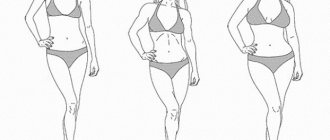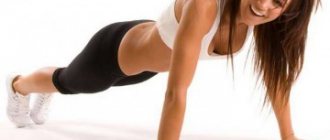“A morning run makes your day better. Because nothing worse will happen to you.” Blogger Yana Zolotova
, who decided to check what would happen to her body if she ran for 30 days in a row. Despite the rapidly growing popularity of a healthy lifestyle, many people still associate running with painful fulfillment of school standards and something that does not bring any physical or aesthetic pleasure.
Run for fun. How to make the first start comfortable for a beginner
Why do runners torture themselves in the morning?
Previously, Yana was skeptical about those who jog daily. And she gave the example of a man who ran laps around the stadium every morning. The girl even wondered if all the runners were members of some kind of sect, because voluntarily raping the body in the morning is madness.
View this post on Instagram
The crazy motivation seemed unreal to the girl, so she decided to check whether she was able to withstand such loads and what it would mean for her. And at the same time, Yana wanted to establish a daily routine, which was very disrupted for her. Indeed, in theory, if you constantly run in the morning, then by the end of the day fatigue accumulates, which forces you to go to bed earlier and get up earlier.
Running and spine problems
Supporters of running argue their position with the following argument: an adult does not have blood vessels in the intervertebral discs, so they can receive “nutrition” only as a result of diffusion from other tissues, and this process is very well stimulated by running or long walking. This is true; with limited “nutrition” of the intervertebral discs, they age and destroy much faster, so we can conclude that for a healthy person who does not have spinal diseases, running can help prevent osteochondrosis and other disorders. At the same time, it is important to properly control the load and monitor your health in general and the condition of the spine in particular (in order to identify any diseases at an early stage and stop training).
With osteochondrosis and other diseases of the spine, running is rather contraindicated. As you know, running is a cyclical sport; the running movement consists of several phases. During the landing phase, a person’s weight increases five times, that is, if a runner’s mass is, for example, 80 kilograms, upon landing he weighs 400 kilograms. Accordingly, the load on the spine increases, and if a person already has osteochondrosis, such a concussion aggravates the situation and can contribute to complications.
Some experts recommend that people who run after thirty years of age (at an age when the risk of osteochondrosis increases) follow a number of rules: run on soft surfaces whenever possible (soil, grass), avoid hard ones (asphalt, concrete), use cushion-type sneakers (softening ), combine running with special gymnastics to strengthen the spinal muscles.
From all this we can draw the following conclusions: for a young and healthy body, running is certainly useful; after thirty, continuing to run requires increased attention to your spine, and for people with spinal diseases, running should be stopped, replacing them with therapeutic exercises.
Running, without a doubt, improves the physical fitness of a healthy body, but whether it is possible to run if there are certain problems with the spine is already a controversial issue.
From the point of view of the spinal column, race walking is much more beneficial than running, since running can cause severe stress to the body. Each running stride has what is called a flight phase, where the two legs are in the air and not in contact with the ground. When one leg lands, it takes on a load several times greater than the body weight. For example, if a person’s body weight is 90 kg, then the load on the foot when it touches the ground will be 450 kg. It turns out that with each step the spine seems to stretch, muscles and tendons tense, and a large load is placed on the knee joints.
Healthy people after 30 years of age, when the risk of osteochondrosis increases, are advised to follow the correct running technique:
- Stopping body swaying is of great importance for the spine. This happens when the feet are placed incorrectly: their inner edges should be on the same line. When running, a small angle between the toes of the feet is allowed so that the big toe takes the greatest stress when pushing.
- Equally important for the spine is the correct placement of the feet when they touch the ground. To distribute the load evenly, it is advisable to land on your entire foot.
- When running, you need to choose the right stride length. With a wide step, there is a possibility of “bumping into a straight leg”, and with a narrow step, the feet receive unnecessary stress, and there is not enough muscle tone. The length of the step is selected based on the comfort of running and the smoothness of movements.
- One of the most important rules of running is the immobility of the upper body relative to the vertical axis. This will protect you from injuries to your joints and spine. You also need to pay attention to your posture: you cannot tilt your body back or forward.
Also, doctors do not recommend running on hard surfaces (concrete, asphalt); it is better, if possible, to give preference to soft ones (grass, soil). You need to run in special softening sneakers and combine running with gymnastics, which will help strengthen the muscles.
From this we can conclude that running is beneficial for a healthy person; after 30 years, you can continue running, but follow the listed rules, and for people with spinal diseases, it is better to replace running with walking or therapeutic exercises.
Author: K.M.N., Academician of the Russian Academy of Medical Sciences M.A. Bobyr
First 20 minutes, then 40
Yana started very carefully. The first few days she went outside at 10 am and went for runs lasting no more than 20 minutes. It doesn't sound very impressive, but for a person taking his first steps, this is a completely normal duration. And after a couple of days, the blogger increased the time to 40 minutes, during which she managed to run 5 km.
View this post on Instagram
At the same time, Yana admits that she previously did cardio training in the gym, so she had a certain level of endurance. After the first week, the girl had already gotten used to running, and she even began to like it! But just seven days ago she was ready to call the runners sectarians. Now she joked that she herself had joined a “running sect.”
Harmful rules: why you shouldn’t run in a mask
How many calories are burned?
There are no universal figures for calorie consumption during jogging.
These are individual indicators for each person. Calorie consumption depends on:
- From the physical endurance of the body.
- On the speed of metabolic processes.
- From body weight.
- From the duration , speed and nature of the run.
With a slow metabolism, the result of burning calories will be insignificant.
With rapid metabolic processes, it is much larger, but weight is gained as quickly as it is consumed. The calories obtained with the latter, before jogging and eating food with fast carbohydrates and polysaccharides, are usually consumed within 40 minutes after the start of physical activity.
Then the body begins to use up its own fat reserves. Calorie consumption slows down, because when burning fat, more complex biochemical processes take place. With different types of load, depending on the nature of running and your own weight, calories are burned differently.
Running can be:
- amateur;
- jogging;
- sprint;
- interval;
- over rough terrain;
If a person weighs about 70 kg and runs at an average amateur speed of 8 km per hour, then he will spend approximately 600 to 1 thousand kcal in one hour of jogging. With other types of running, the calorie consumption will be different.
The choice must be approached individually based on the physiological characteristics of the body and the tasks set to achieve the desired form.
Run in parks, not stadiums
Despite her nascent love for running, Yana encountered a problem. The football team was based at the stadium where she ran. The boys' coach categorically forbade her to jog during their classes. The girl did not argue and went to a large park located nearby. And I felt a huge difference.
No coaches who can be rude at any moment, no boring stadium landscapes that repeat every minute. Our heroine lives in St. Petersburg, so the park where she decided to continue her studies has beautiful views. “I started to get high from running,” Yana admitted after one of her runs on Krestovsky Island.
View this post on Instagram
Cottage cheese instead of sweets
Further more. Previously, after physical activity, the blogger wanted to go to the store and buy something sweet, because she deserved it. Now, after a couple of weeks of running outside, Yana went to the store and unexpectedly bought... two packages of cottage cheese. And this despite the fact that she never liked cottage cheese. Remember the phrase at the beginning of the text: running makes your day better because nothing worse can happen? So now Yana, on the contrary, wanted the new day to come as quickly as possible. This way she will be able to do what she now loves again.
How to eat less sugar and what to replace sweets with?
What are the dangers of running on an empty stomach?
If the weight is within the normal range, but there are flaws in the figure in the form of a small tummy or “flabby” legs, then such people are not recommended to run on an empty stomach.
People with low body fat in the early hours have extremely low glycogen reserves, and if they exercise without replenishing nutrients, the body will begin to look for alternative sources of energy. One of these sources is muscle tissue, which will be the first to suffer if people running on an empty stomach are low in fat.
What to do? For people who do not have problems with excess weight, but suffer from figure flaws, the way out of the situation is to run on a full stomach, mainly in the evening.
If your #1 problem is your stomach, then use the tips in this article about how running affects your abs. If the problem part is in the legs, then in addition to running, it would not be a bad idea to use an arsenal of exercises for the legs and buttocks, which in a relatively short time will allow you to admire the result.
How has your body changed after daily jogging?
As it turns out, running has a number of miraculous properties. Yana says that after the first 10 days she noticed big changes. Her skin condition has improved and she has lost about 2 kg. And, most importantly, my general well-being has changed: the constant feeling of fatigue has disappeared, and greater motivation to work has appeared.
In addition, the blogger admits that running forced her to voluntarily get up at 8 am. Nothing else in the world could motivate her to do this. Now, by 10 am, the girl already has time to exercise, swim, have breakfast and be ready for work and other things in a cheerful mood. Before the challenge, she could still sleep at this time, and if she woke up, she was in a broken and unproductive state.
After the end of the 30-day period, Yana became so interested in running that she started thinking about participating in a half-marathon or even a marathon. The girl spoke in more detail about the 30-day experience in the video.
What should you do before you start running?
It is very important that running brings physical and mental benefits. And if everything is quite obvious with the moral, then with the physical you need to be more careful. Before you start actively training, it is strongly recommended to consult a doctor: check your joints, heart and everything else. And only then carefully begin jogging, gradually increasing the load.
How to avoid injuries while jogging? 5 things to remember
Many people are embarrassed to exercise on the street because they are afraid of the sidelong glances of passing pedestrians or drivers of passing cars. The truth is that they are most likely jealous of you. And even if they laugh, then what do you care about those with whom you will never cross paths again in your life? But you will have a good body and a great mood.
Running has a positive effect on health
Despite the popular belief that running is harmful to the body, training in compliance with all the rules has only a positive effect on human health. Regular long-distance running strengthens the heart muscle and dilates blood vessels, the capillary network expands, ensuring blood flow to all organs, including the heart - reducing the risk of thrombosis and heart attack. The entire body is rejuvenated by activating hematopoiesis and the synthesis of new cells.
The health benefits of running also manifest itself in strengthening the immune system. Moderate intensity training in the fresh air hardens, strengthens joints and the respiratory system. As a bonus, a person receives a charge of energy, which has a cumulative effect. At first, running gives you a feeling of vigor for several hours, then for a day, and over time we begin to feel this state constantly.
Press service of the Kazan Half Marathon











